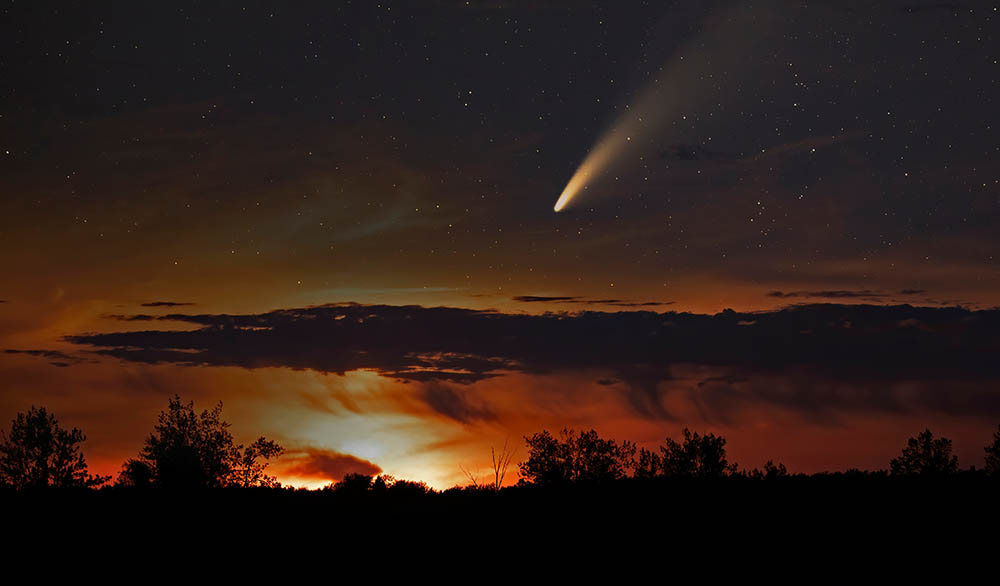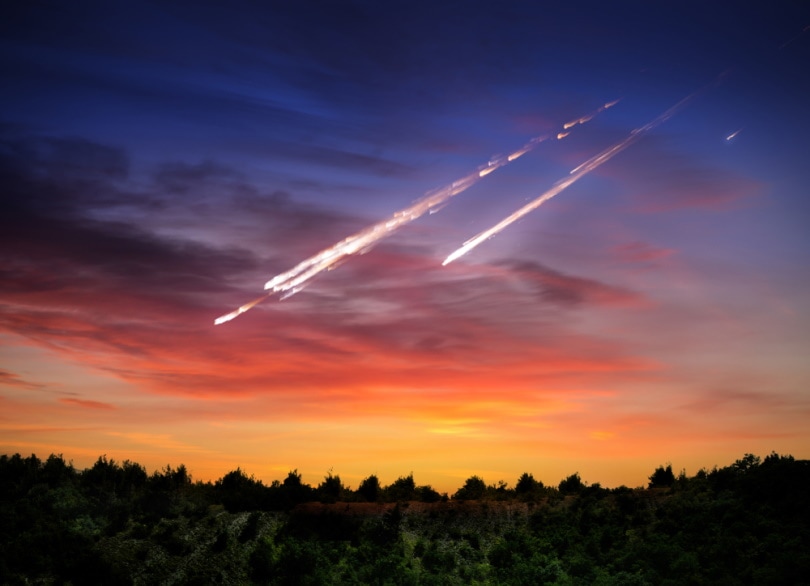Why Do Meteors Burn Up in the Mesosphere? Everything to Know!
Last Updated on

Looking up into the night sky, you’ll often see a beautiful display of stars twinkling in the darkness. And if you’re lucky enough, you may get to see a shooting star. Interestingly enough, that shooting star is actually a meteor burning up in the mesosphere.
Once a meteor passes through the two outside layers of our atmosphere, an increase in the number of gasses and molecular density causes friction. In turn, this friction creates heat, and the meteor begins burning up. To the naked eye, this is what we know as a shooting star.

Different Layers of the Atmosphere
To properly understand why meteors burn up in the mesosphere, we need to understand the layers of our atmosphere and how they are different. There are five major layers to Earth’s atmosphere and several secondary layers. For this explanation, we will focus on the five major layers.

- Troposphere: This is the layer we live in. It extends from the surface of Earth to approximately seven and a half miles (12 km) up. The troposphere is the densest of all atmosphere layers because it contains the air needed for life and around 99% of all water vapor and aerosols.
- Stratosphere: This is the next layer that starts where the troposphere ends and extends to around 31 miles (50km) above Earth’s surface. One of the most critical aspects of this layer is that it’s responsible for protecting us from most of the harmful UV radiation from the sun. An interesting fact about the stratosphere is that the layer has almost no clouds or weather.
- Mesosphere: The third layer away from us, also known as the middle layer, extends from 31 miles to around 50 miles (80 km) above Earth’s surface. One thing about the mesosphere is that it gets progressively colder the higher you go. In fact, it’s the coldest place within Earth’s system. There is very little water vapor in this layer, and only sounding rockets or rocket-powered aircraft can reach this layer.
- Thermosphere: This layer spans a much longer distance than the first three layers. It extends from around 50 miles up to 440 miles (700 km) above Earth. There is no vapor or clouds in this layer, and it has an extremely low molecule density, so the temperature increases the higher you go. The aurora borealis and aurora australis are occasionally seen in this layer. This is also the layer in which the International Space Station (ISS) orbits.
- Exosphere: As the final layer, the exosphere extends the furthest from the Earth to approximately 6,200 miles (10,000 km) above its surface. Molecular density is extremely low in this layer as well. So low that the layer doesn’t behave like a gas, and particles often drift into space. Most of our satellites orbit in this layer.

Why do Meteors Burn up in the Mesosphere?
As meteors enter our atmosphere in the exosphere layer, they are met with essentially no resistance due to the low molecular density. And even as the meteor travels through the thermosphere, a relatively low molecular density still prevents friction.
However, once the meteor hits the mesosphere, the molecular density increases. There are gasses and water vapor present that begin to cause friction. To get an idea of how minimal the change has to be, keep in mind that the air in the mesosphere is still far too thin for humans to be able to breathe.
The friction happens at a molecular level, and that is enough to cause what we see as shooting stars. Occasionally, if a meteor manages to make it through the mesosphere without completely burning up, it may hit the Earth. In this case, it becomes a meteorite.


Closing Thoughts
Our knowledge of the Earth and the universe beyond is increasing exponentially as time moves on. However, we’ve still only scratched the surface of everything there is to know about this blue planet we call home. But next time you see a shooting star, now you know why it’s on fire in the first place, plus where it is located.
Featured Image Credit: Jim Cumming, Shutterstock
About the Author Shea Cummings
Shea Cummings is a passionate content writer who believes that the power of words is immeasurable. He leverages years of experience in various trades such as carpentry, photography, and electrical to bring his articles to life. His goal is to provide his readers with information that delights and informs. When he's not writing you can find him spending time in the outdoors or playing some Minecraft on the Xbox with his wife and two sons.
Related Articles:
How to Clean a Refractor Telescope: Step-by-Step Guide
How to Clean a Telescope Eyepiece: Step-by-Step Guide
How to Clean a Rifle Scope: 8 Expert Tips
Monocular vs Telescope: Differences Explained (With Pictures)
What Is a Monocular Used For? 8 Common Functions
How to Clean a Telescope Mirror: 8 Expert Tips
Brightfield vs Phase Contrast Microscopy: The Differences Explained
SkyCamHD Drone Review: Pros, Cons, FAQ, & Verdict
